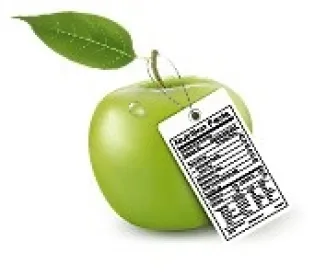The Food and Drug Administration (FDA) recently issued a final rule to implement the new Nutrition Facts label for packaged foods. According to the FDA, the updated label will reflect new scientific information, including the link between diet and chronic diseases, such as obesity and heart disease, and will make it easier for consumers to make better informed food choices.
As set forth in a separate summary released the same day, the highlights of the final rule are as follows:
The new label will look similar to the current one, but there will be several differences. These changes include increasing the type size for “calories,” “servings per containeA New Designr,” and the “serving size” declaration, and bolding the number of calories and the serving size declaration to highlight this information.
Manufacturers must declare the actual amount, in addition to percent Daily Value of vitamin D, calcium, iron and potassium. They can voluntarily declare the gram amount for other vitamins and minerals.
The footnote will change the explanation of what percent Daily Value means. It will read: “*The % Daily Value tells you how much a nutrient in a serving of food contributes to a daily diet. 2,000 calories a day is used for general nutrition advice.”
Updated Information about Nutrition Science
“Added sugars,” in grams and as percent Daily Value, will be included on the label.
Vitamin D and potassium will be required on the label. Calcium and iron will continue to be required. Vitamins A and C will no longer be required but can be included on a voluntary basis. While continuing to require “Total Fat,” “Saturated Fat,” and “Trans Fat” on the label, “Calories from Fat” is being removed because research shows the type of fat is more important than the amount.
Daily values for nutrients like sodium, dietary fiber and vitamin D are being updated based on newer scientific evidence from the Institute of Medicine and other reports such as the 2015 Dietary Guidelines Advisory Committee Report, which was used in developing the 2015-2020 Dietary Guidelines for Americans.
Serving Sizes and Labeling Requirements for Certain Package Sizes
By law, serving sizes must be based on amounts of foods and beverages that people are actually eating, not what they should be eating. How much people eat and drink has changed since the previous serving size requirements were published in 1993. For example, the reference amount used to set a serving of ice cream was previously half a cup but is changing to two-thirds of a cup. The reference amount used to set a serving of soda is changing from 8 ounces to 12 ounces.
Package size affects what people eat. So for packages that are between one and two servings, such as a 20-ounce soda or a 15-ounce can of soup, the calories and other nutrients will be required to be labeled as one serving because people typically consume it in one sitting.
For certain products that are larger than a single serving, but that could be consumed in one sitting or multiple sittings, manufacturers will have to provide “dual column” labels to indicate the amount of calories and nutrients on both a “per serving” and “per package”/“per unit” basis. Examples would be a 24-ounce bottle of soda or a pint of ice cream. With dual-column labels available, people will be able to easily understand how many calories and nutrients they are getting if they eat or drink the entire package/unit at one time.
Compliance Dates
Manufacturers will need to use the new label by July 26, 2018. However, manufacturers with less than $10 million in annual food sales will have an additional year to comply.
A copy of the Federal Register notice for the final rule can be found here.



 />i
/>i

